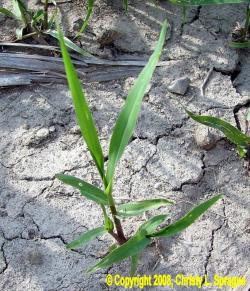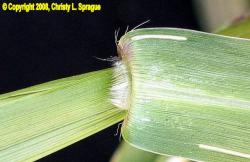Fall panicum
Fall panicum (Panicum dichotomiflorum Michx.)

Life Cycle:
Summer annual. Emerges in late spring, flowers from July to October and dies with frost. A later emergence, 10% emergence occurs after 350 GDD (base 48 deg F).
Emergence:
Primarily emerges from soil depths of 1/2- to 1-inch. However, emergence can occur from 3-inch soil depths.
Seed:
Production Range: 500,000 seeds/plant
Dispersal Mechanisms: None
Longevity: Highly persistent seed. Seed germination was high after 10-years of burial. It was predicted that it would take 313 years to reduce germination to 1%.
Dormancy: Initially dormant. After-ripening is required for seed germination.
Competitiveness:
Moderately competitive. Eight plants per yard of row reduced soybean yield 15%.
Preferred Soil/Field Conditions:
Found on most soil types.

Management:
Biological
Predation/grazing: Not highly palatable to grazing animals. Ground beetles (carabids) eat fall panicum seed that is lying on the soil surface.
Decay: No information.
Mechanical
Tillage: Seedlings are readily controlled by tillage.
Rotary Hoeing: More difficult to control than small broadleaf weeds. Hoe before fall panicum exceed 1/4-inch in height.
Flaming: Grasses are more difficult to control with flaming.
Cultural
Crop rotation: Seldom a weed of small grains and forages.
Planting date: Earlier planting may improve crop canopy development to help suppress fall panicum infestations.
Chemical
Application timing and effectiveness:Fall panicum is easily controlled in broadleaf crops. Controlling emerged fall panicum in corn is more difficult. Please refer to E-434, “MSU Weed Control Guide for Field Crops,” for herbicide recommendations.



 Print
Print Email
Email